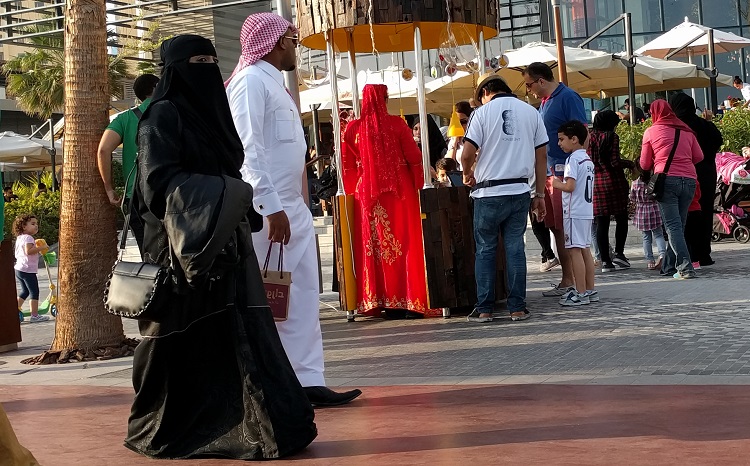
Imagine wandering the vibrant streets of Deira in Dubai, enveloped in a kaleidoscope of colors and scents. Amidst this bustling scene, you encounter individuals wearing flowing headscarves, each one a unique expression of culture and tradition. The Arabic headscarf, whether known as the keffiyeh, ghutra, or shemagh, holds within its folds a rich tapestry of stories and meanings. In this comprehensive guide, we’ll explore the art of tying the Arabic headscarf, from fabric selection to tying techniques, unveiling its cultural significance along the way.
Choosing Your Canvas: Selecting the Perfect Headscarf
Before diving into tying techniques, it’s essential to choose the right headscarf. Consider these key factors:
Fabric Finesse:
- Material Marvels: Choose a fabric that suits your climate and personal style, whether it’s breathable cotton, warm wool, or luxurious silk.
- Understanding the Weave: Pay attention to the fabric’s weave, as it affects texture and opacity. Loose weaves create a flowing look, while tighter weaves offer structure.
Size Matters:
- Finding Your Fit: Select a size that complements your tying style and ensures comfort throughout the day.
- Comfort is Key: Your headscarf should allow for secure wrapping without feeling restrictive.
Pattern Power:
- A Symphony of Colors and Designs: Explore the myriad patterns available, from solid colors to bold stripes and geometric designs.
Mastering the Art of the Fold: Tying Techniques Unveiled
Now, let’s delve into tying techniques for the Arabic headscarf:
Primary Style: The Timeless Classic
- Fold and Place: Start by folding your square scarf diagonally to form a triangle, placing the folded edge at the center of your forehead.
- Secure and Cross: Hold the loose ends together at your forehead, then bring them over your head, crossing once at the back.
- Tuck and Adjust: Tuck the crossed ends under the scarf at the back to secure it in place.
Beyond the Basics: Exploring Popular Variations
- The “Fighter Fold”: This style involves an additional crossing step for a more structured drape, ideal for active individuals.
- The “Saudi Fold”: With a distinctive front drape, this elegant style often incorporates an agal for a formal touch.
Unveiling the Layers: Cultural Significance and Etiquette
The Arabic headscarf carries deep cultural significance, reflecting tradition, personal expression, and diverse narratives. Understanding its importance fosters respect and appreciation for this timeless symbol.
Unfurling the FAQs: Addressing Your “People Also Ask” Queries
- Is it okay for non-Muslims to wear an Arabic headscarf? Respectful appropriation involves understanding cultural significance and avoiding trivialization.
- How do you care for and wash a headscarf? Always follow care instructions provided on the label, including washing temperature and drying methods.
- Where to buy authentic headscarves? Explore local markets and artisan shops within Arab communities for authentic finds.
Unveiling the Magic: Conclusion and Beyond
As we conclude our journey, remember that the Arabic headscarf is more than just a garment—it’s a connection to diverse cultures and personal stories. Embrace regional styles, engage in dialogue, and share the beauty of the headscarf with the world. Let its magic continue to unfold in your life, fostering respect, understanding, and appreciation wherever you go.


Comments